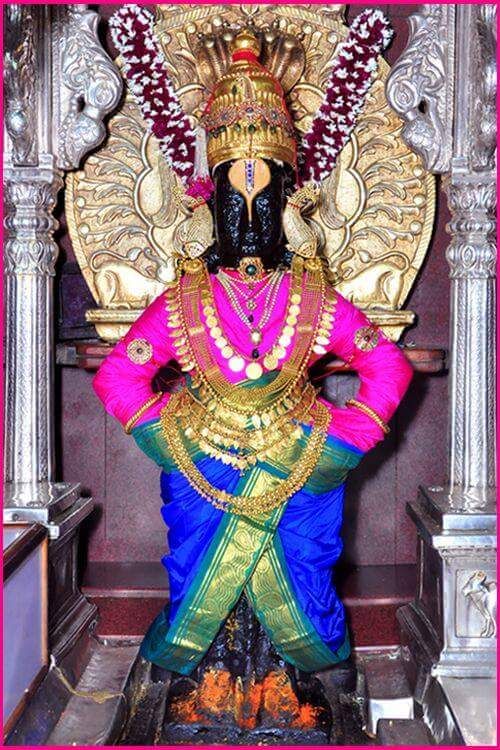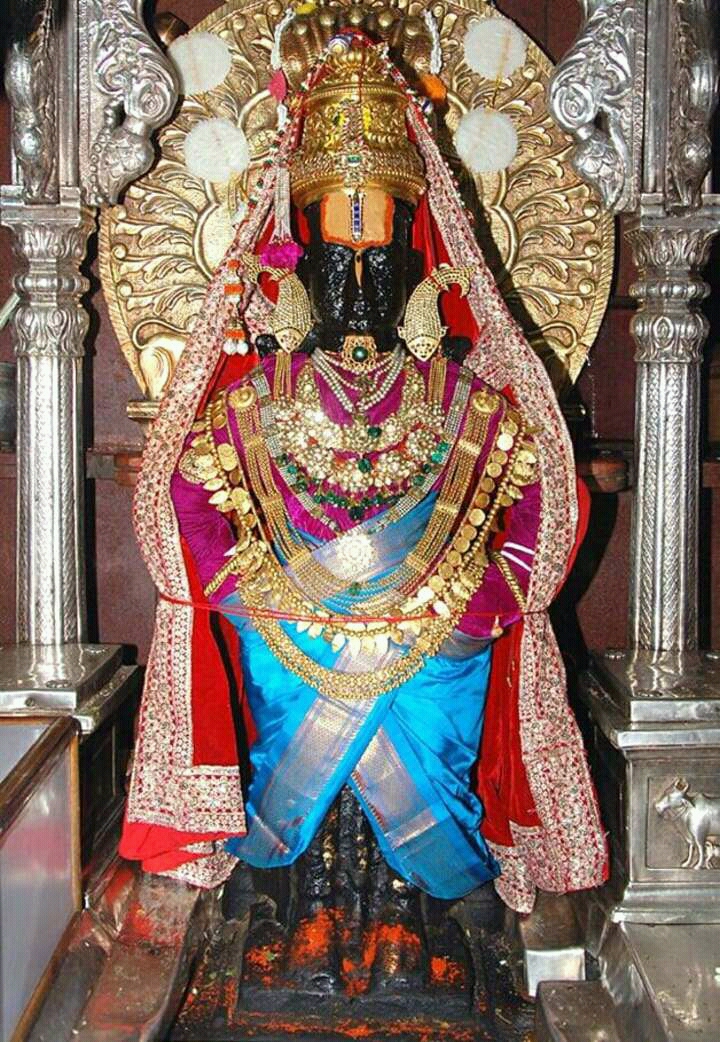
The parabrahma or the God of Pandharpur is worshipped and lovingly called by his devotees with many names in different course of the time, like Pandharinath, Pandurang, Pandhariraya, Vithai, Vithoba, Vithumauli, Vitthal gururao, Pandurang, Hari etc. However, today this God is well-known as Pandurang and Shri Vitthal. Many historians and researchers tried to find out the etymological origin of the word “Vitthal”. Some scholars believe that it is a distorted form of the original word Vishnu. The words like Vittharas, Vitta found in various Kannad epigraphs are basically the elaboration of the word Vishnu. The Great Saint poet Tukaram defines the word Vithoba in one of his abhangas that stands for ‘Knowledge’ + Thoba Stands for ‘form’ Thus Vithoba stands for the ‘form of ultimate Knowledge’ or ‘idol of ultimate Knowledge’. It is also believed that Vi stands for bird Eagle + Thoba Stands for sitting place, thus Vithoba stands for the ‘God who sits on Eagle’. Vithoba is God Vishnu, standing on a brick and resting his arms on his west. It is believed that Shri Krishna, Shri Vishnu and Shri Vithoba are all different names and forms of the one and the same God. Shri Krishna is known as incarnation of Shri Vishnu which took place on Wednesday (Shravan Vadya Ashtami) at the end of Dwaparyuga. Vithoba is Shri Krishna only. Wednesday is known as the day of Vithoba. So devotees (varkari) of Vithoba never leave Pandharpur on Wednesday even now.
Vi karo vidhatay, tha karo nilakanthay | La karo lakshmikant, vitthalabhidhineeyame ||’
Vitthal is benevolent for the downtrodden and is bhaktakamkalpadrum and yogiyadurlabh. The sculpture is self made up of sand stone. He has cap just like crown on his head. It is known as shivlinga as it looks like the shivlinga. Face of Shri Vitthal is long, cheeks are bulky, his eyes are looking horizontally straight. He wear’s Makar kundale in his ear. A Kaustubhmni is there around his neck like necklace. Shinke are on his back and on his shrivatsalanchhan. Angads are there on his both arms and on his both wrists he has Manibandhs. dya Shankaracharya wrote a Pandurangashtak, in which he describes Vitthal as “Nitamba Karabhyam Druto Yena Tasmat”. Shri Vitthal put his both hands on his waist.

Mother Shri Rukmini’s temple is in north of the temple of Shri Vitthal. There are four sections of the temple sabhamandap, main mandap, madhyagriha and gabhara. On the north of the madhyagriha, there is a room for wardrobe of Shri Rukmini. It is equipped with silver bed, well maintained mattresses and velvet clothes.
Next to gabhara there is tall square size pillar on which west facing magnificent and attractive idol of mother Shri Rukmini is fixed. Like Shri Vitthal she is also standing resting her hands on her waist. The mother Shri Rukmini’s idol is decorated with many ornament’s and clothes. On her forehead there is big round kumkum tilak. All devotees touch Shri Rukmini’s feet with full of love and devotion in mind.
There is reference in Holy Scripture about how Shri Rukmini and Shri Vitthal arrived in Pandharpur. - Shri Krishna had eight wives. One day Shri Rukmini saw Shri Krishna sitting with a wife named Radhika. Shri Rukmini left the place out of hatred and jealousy after knowing Shri Krishna’s affection towards other wives and went to Dindir van. Shri Krishana didn’t know where Rukmini was started a search for Rukmini and reached in Dindir van where He found Rukmini. There was also another reason behind Shri Krishna’s Visit to Dindir van and that was His one of the greatest devotees Bhakt Pundalik was also living in the same place with his ailing parents. Shri Krishana wanted to fulfill the promise given to King Muchkund by Him who was Bhakt Pundalik in his next life.